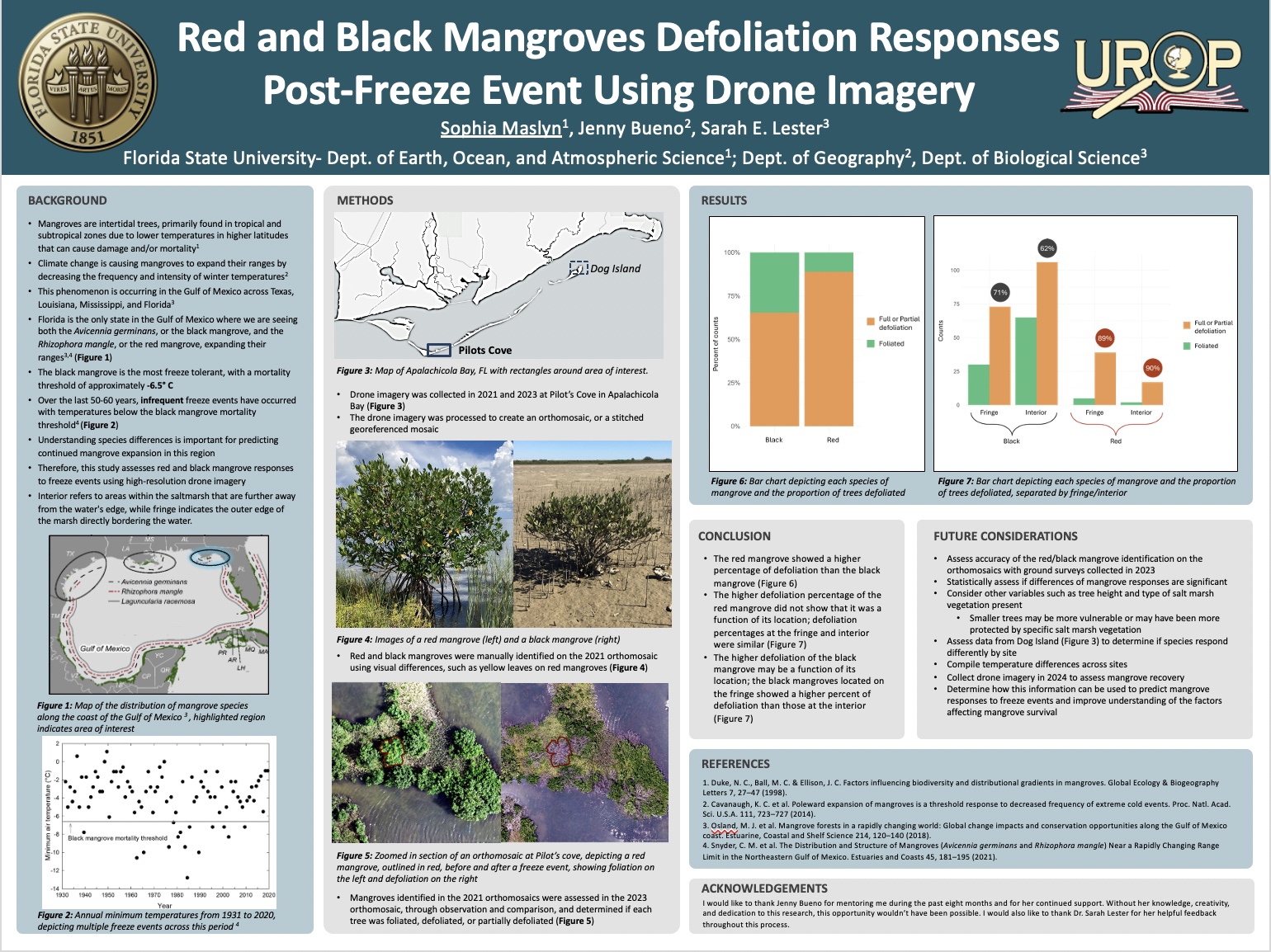Research Symposium
24th annual Undergraduate Research Symposium, April 3, 2024
Sophia Maslyn Poster Session 1: 9:30 am - 10:30 am /163

BIO
Hello my name is Sophia Maslyn and I am an honors student at Florida State University studying Environmental Science and Media/Communication Studies. I am originally from New York and have always had a passion for studying ecosystems with high biodiversity which heavily influenced my decision to attend FSU given the variety of opportunities. I have a strong passion for coastal ecology and understanding how the ocean can interact and impact different types of ecosystems. I also have a particular interest in implementing sustainable practices in every aspect of life which overlaps my love for the environment with many of my other interests including broadcast media, journalism, fashion, and production.
Red and Black Mangroves Defoliation Responses Post-Freeze Event Using Drone Imagery
Authors: Sophia Maslyn, Jenny BuenoStudent Major: Environmental Science, Media/Communication Studies
Mentor: Jenny Bueno
Mentor's Department: Department of Geography Mentor's College: College of Social Sciences and Public Policy Co-Presenters:
Abstract
Mangroves are intertidal trees that are typically located in tropical and subtropical coastal areas due to temperatures in higher latitudes that can cause damage and/or mortality. However, climate change is making winter temperatures more mild, allowing mangroves to survive and establish in higher latitudes, resulting in mangroves encroaching on other habitats. We are seeing this phenomenon in Apalachicola Bay, Florida. Both red (Rhizophora mangle), and black mangroves (Avicennia germinans) have been documented in this region, also a unique phenomenon since other Gulf of Mexico states are only seeing black mangroves expanding. Our study uses aerial imagery to assess defoliation in red and black mangroves after a freeze event at one site, Pilot’s Cove. To estimate the resilience of mangrove trees after a freeze event, we recorded the percent of mangroves defoliated over the course of two years and their position in the habitat, on the water’s edge or in the interior. This research will give us a better idea of which type of mangrove is more tolerant after a freeze event. This information will allow coastal managers to better predict how mangroves are expanding and additionally provides knowledge to how each species will react during future freeze events.
Keywords: mangrove, remote sensing, freeze event


